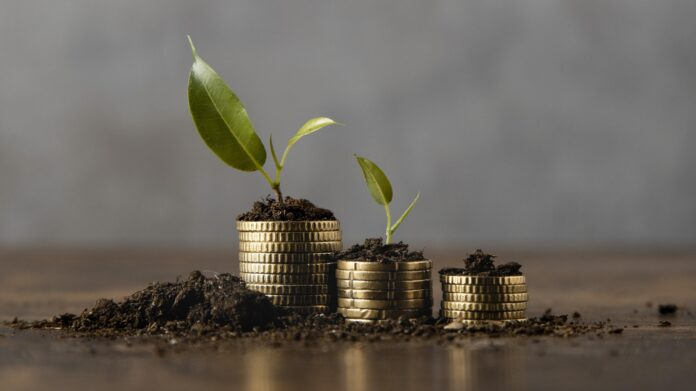GDP (Gross Domestic Product) is an indicator that has sometimes come under fire. Because of the inadequacy of its foundation, namely, to highlight the sum of the final goods and services produced by a country in a given period.
The “Six big questions for the global economic recovery”
Recently, the United Nations High-level Advisory Board on Economic and Social Affairs (HLAB) has released a document called Six big questions for the global economic recovery. This concise publication highlights some macro issues that policymakers need to consider in addressing the big challenge of economic recovery.
One of the objects of reflection in this document is precisely the concept of GDP. An indicator that will continue to play a crucial role in monitoring the economic growth of countries, but whose limitations with respect to the new concept of sustainable development, which has emerged over the past decade, are now evident.
What GDP does not measure
The great limitation of GDP is that it cannot measure the complexity of society. In fact, GDP does not measure all the factors that contribute to the well-being of society: health, education, social relations, the environment. “GDP measures everything “except what makes life truly worth living,” Bob Kennedy said 50 years ago. Of course, making measurable what makes life worth living is by no means simple.
Steps forward in the debate on development
So many steps have been taken in this direction through the introduction of new indicators that take into account dimensions currently neglected by GDP. For example, SEEA (System of Environmental Economic Accounting) is an indicator that measures the reciprocal relationship between the economy and the environment.
The debate moves forward and expands from the concept of economic growth to the much broader concept of quality of life. In 2011, the OECD, Organization for Economic Cooperation and Development, launched the Better Life Initiative. This initiative is aimed at providing a better understanding of what defines a person’s well-being. Through a dedicated web portal, everyone can enter the well-being debate by assigning his or her own importance to the eleven proposed themes: social relations, education, environment, civic engagement, health, housing, income, work, life satisfaction, security and work-life balance.
The “Beyond GDP” agenda, towards a redefinition of GDP
These initiatives constitute several pieces in the challenging but necessary debate toward a redefinition of the concept of GDP. The paper Six big questions for the global economic recovery identifies in this regard a strategy to move beyond this concept. This strategy needs to identify complementary indicators to GDP that are of shared interest, that are based on truly measurable data, and that meet clear and critically important objectives. This will lead to the creation of a new set of indicators, but more importantly a new narrative that can effectively shape the actions of policy makers beyond the limited and limiting concept of GDP.
Negli ultimi decenni, il Prodotto Interno Lordo (PIL) come indicatore di progresso viene sempre più spesso messo in discussione. Ciò a causa del suo fondamento piuttosto limitante, vale a dire evidenziare la somma dei beni e dei servizi finali prodotti da un Paese in un dato periodo.
Le “Six big questions for the global economic recovery”
Di recente, lo United Nations High-level Advisory Board on Economic and Social Affairs (HLAB) ha rilasciato un documento chiamato Six big questions for the global economic recovery: questa sintetica pubblicazione evidenzia alcuni macro-temi che i decisori politici dovrebbero tenere in considerazione per affrontare la grande sfida della ripresa economica.
Uno degli oggetti di riflessione di questo documento è proprio il concetto di PIL. Un indicatore che continuerà ad avere un ruolo cruciale per monitorare la crescita economica delle nazioni, ma i cui limiti rispetto al nuovo concetto di sviluppo sostenibile delineatosi nell’ultimo decennio sono ormai evidenti.
Ciò che il PIL non misura
Il grande limite del PIL è di essere un numero che non può misurare la complessità della società. Il PIL infatti non misura tutti i fattori che contribuiscono al benessere della società: pensiamo alla salute, all’istruzione, alle relazioni sociali, all’ambiente. “Il PIL misura tutto..eccetto ciò che rende la vita veramente degna di essere vissuta”, diceva già Bob Kennedy oltre 50 anni fa. Certo, rendere misurabile ciò che rende la vita degna di essere vissuta non è affatto semplice.
I passi avanti nel dibattito sul progresso
Tanti passi sono stati compiuti in tal senso. Pensiamo all’introduzione di nuovi indicatori che tengono conto delle dimensioni attualmente trascurate dal PIL. Ad esempio il SEEA (System of Environmental Economic Accounting) è un indicatore che misura il reciproco rapporto tra economia e ambiente.
Il dibattito progredisce e si amplia dal concetto di crescita economica a quello, ben più ampio, di qualità della vita. Nel 2011, l’OCSE, Organizzazione per la cooperazione e lo sviluppo economico, ha lanciato la Better Life Initiative: si tratta di un’iniziativa volta a fornire una migliore comprensione di ciò che definisce il benessere delle persone. Attraverso un portale web dedicato, ciascun individuo può entrare nel dibattito sul benessere attribuendo la propria importanza agli undici temi proposti: relazioni sociali, istruzione, ambiente, impegno civile, salute, abitazione, reddito, lavoro, soddisfazione di vita, sicurezza ed equilibrio lavoro-vita privata.
The “Beyond GDP” agenda, verso una ridefinizione del PIL
Queste iniziative costituiscono diversi tasselli nello sfidante ma necessario dibattito verso una ridefinizione del concetto di PIL. Il documento Six big questions for the global economic recovery identifica in tal senso una strategia per superare questo concetto. Questa strategia dovrà identificare indicatori complementari al PIL che siano di interesse condiviso, che si basino su dati realmente misurabili e che rispondano ad obiettivi chiari e di cruciale importanza. Questo consentirà di creare un nuovo set di indicatori, ma soprattutto una nuova narrativa che possa efficacemente indirizzare le azioni dei decisori politici oltre il limitato e limitante concetto di PIL.








